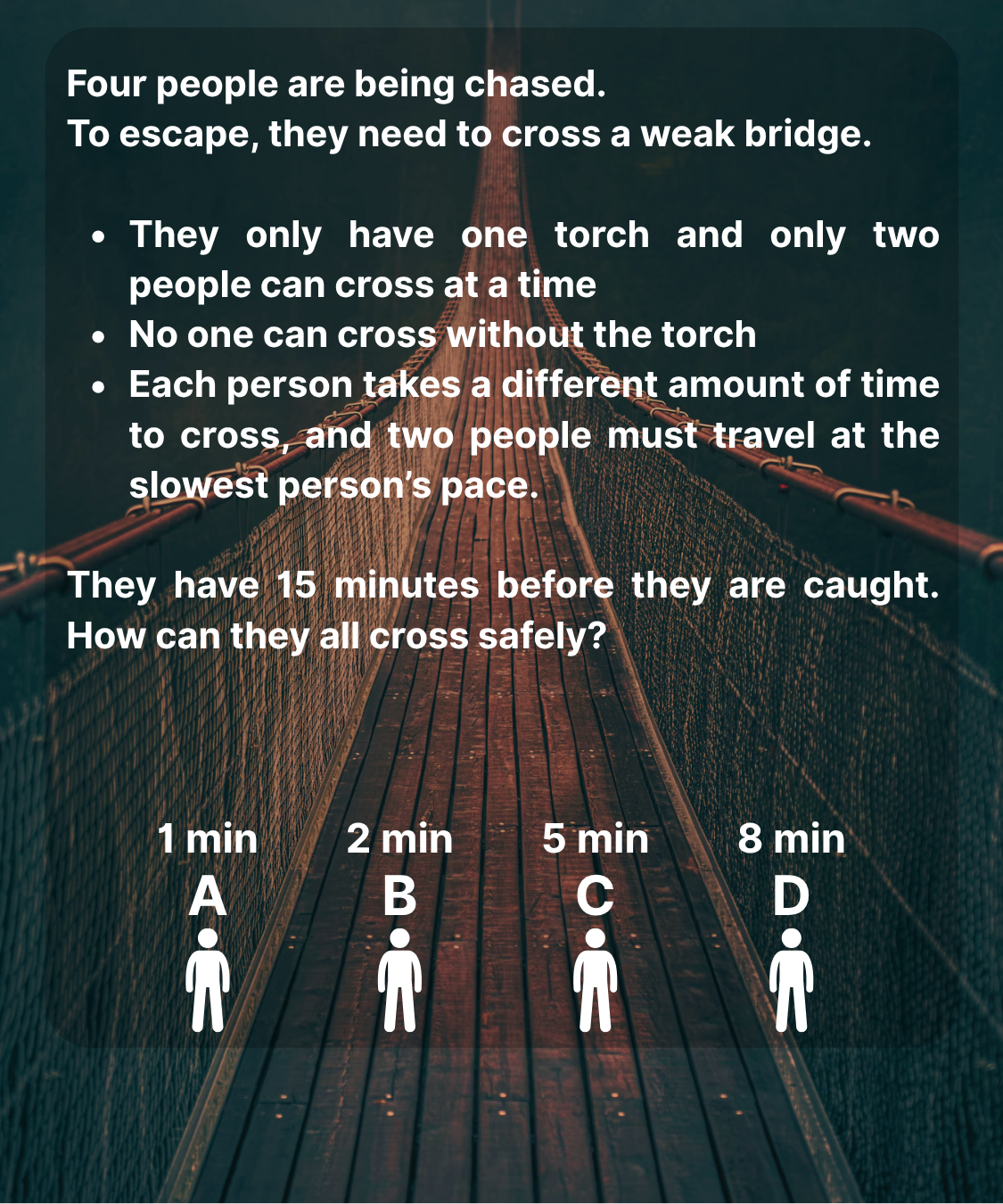
Cut to the Chase
'Come to the point, without unnecessary details’
Origin
In the 1920s, Hollywood was producing silent films. These films often included long, slow-moving scenes filled with dramatic dialogue or romance. However, audiences wanted excitement (the chase scene!). Directors and editors began shouting “Cut to the chase!” to skip the slow parts and get straight to the action.
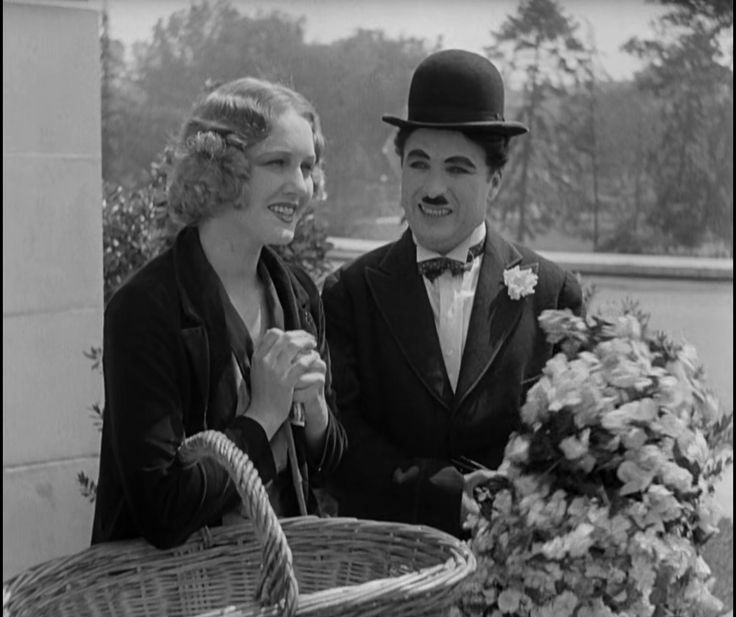
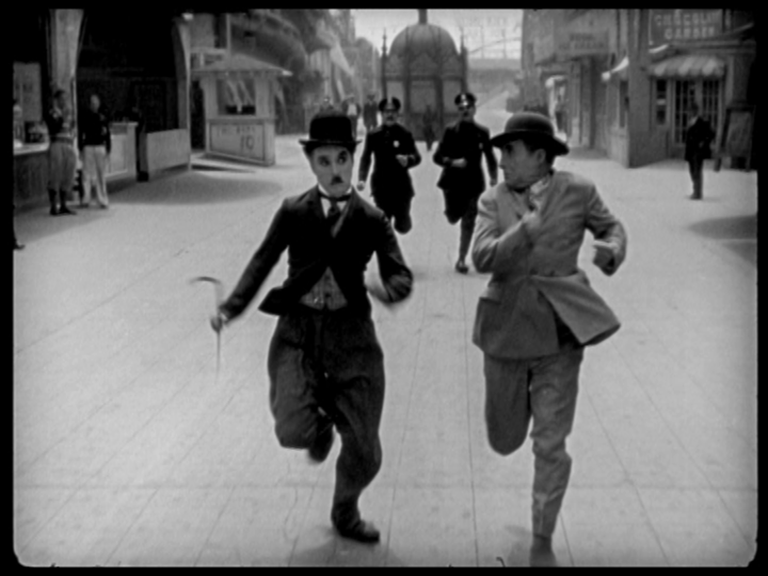
In the 20s, the phrase had a very literal meaning. To "cut" the film strip.
In 1947, the phrase ‘Cut to the chase’ was used figuratively for the first time in print. In a Massachusetts based newspaper, ‘The Berkshire Evening Eagle’. The text read: ‘Let’s cut to the chase. There will be no tax relief this year. In this instance, the phrase is used to deliver bad news in a direct way. They didn’t try to justify the bad news, it was given directly without unnecessary details or “build-up”.
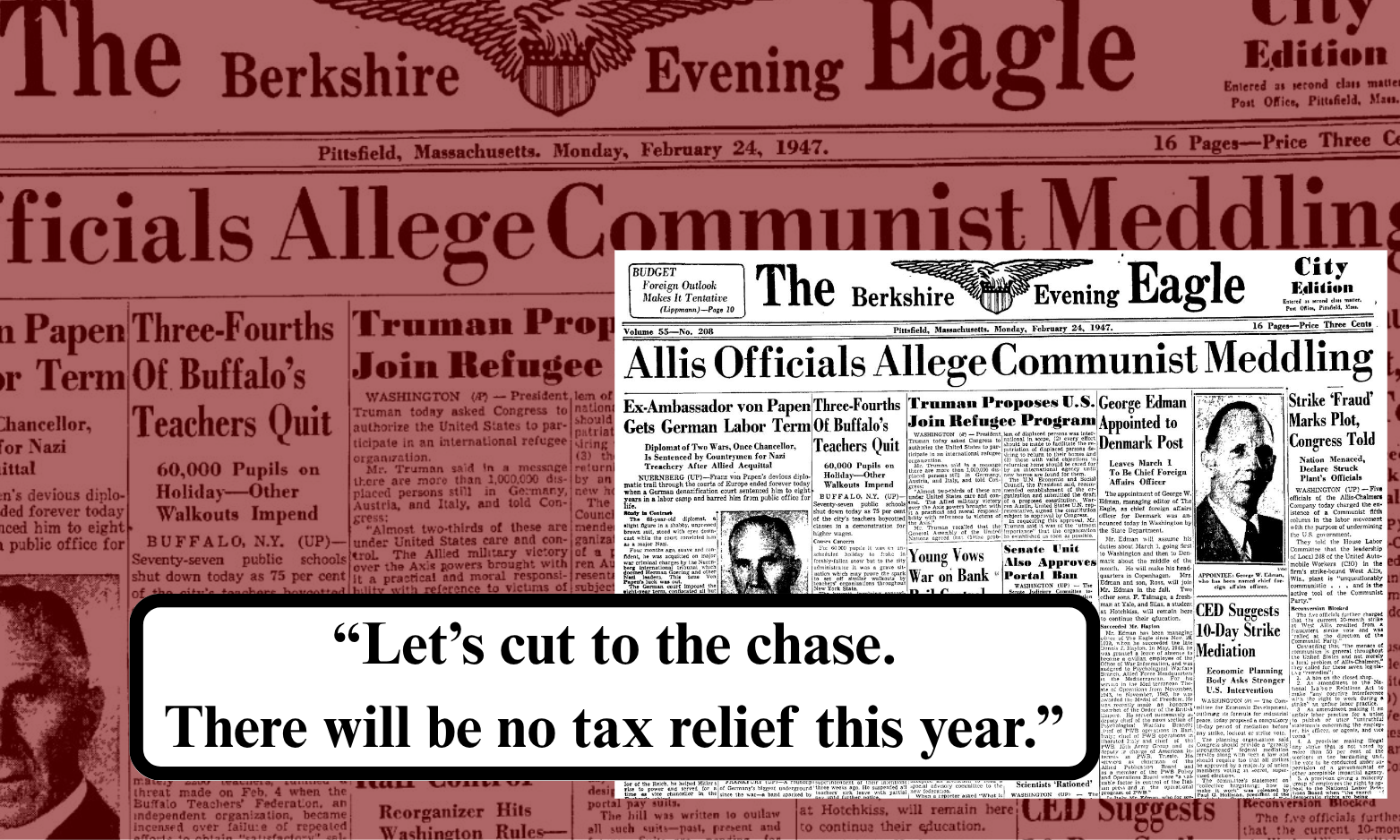
Related Phrases from Film
Below are some related phrases found in film. We have an impatient President of Harvard University, Larry Summers. Who rather politely, yet patronisingly offers an alternative to the phrase 'Get to the point'.
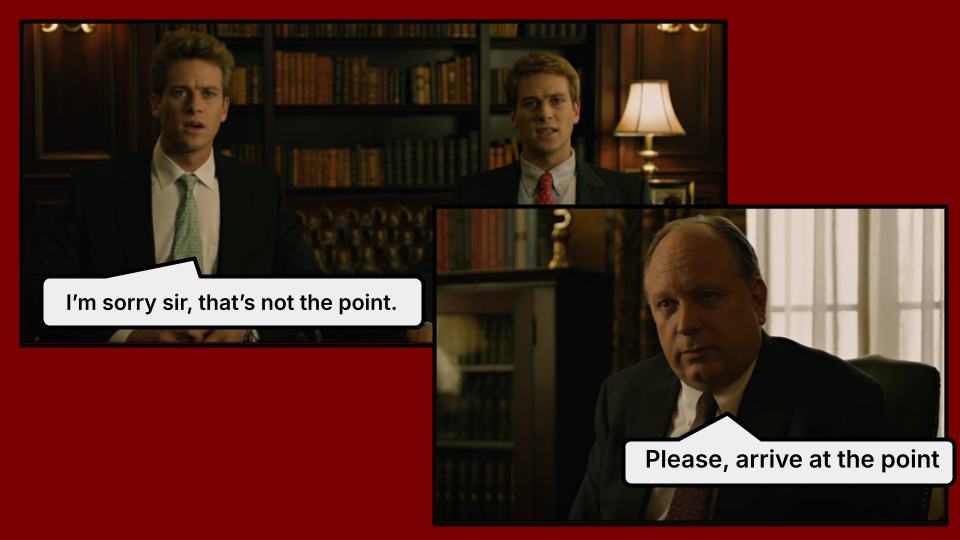
Secondly, Matthew Mcconaughey is having a difficult time in space and asks his robot friend to give him the truth, the whole truth and nothing but the truth!
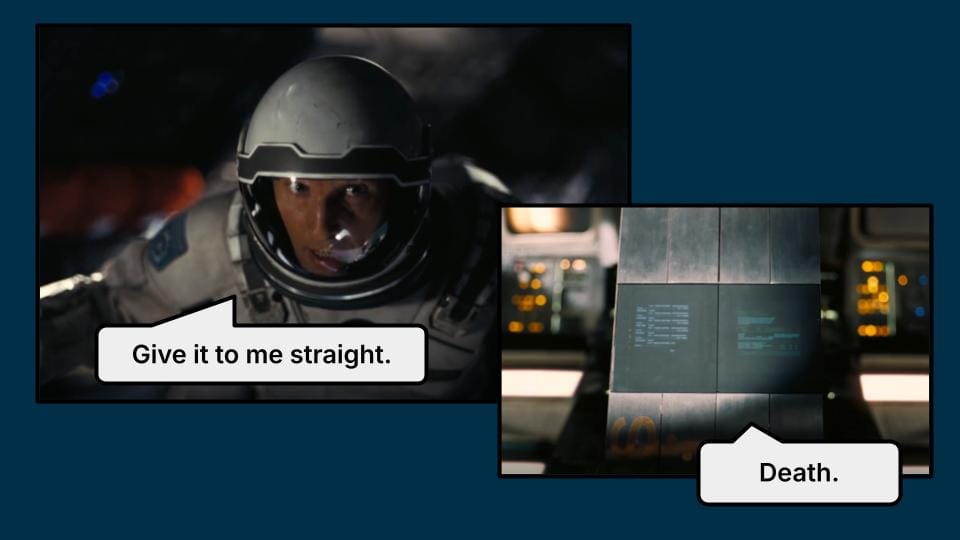
Finally, we have Dicaprio wanting to skip the "chit-chat" and get down to business.
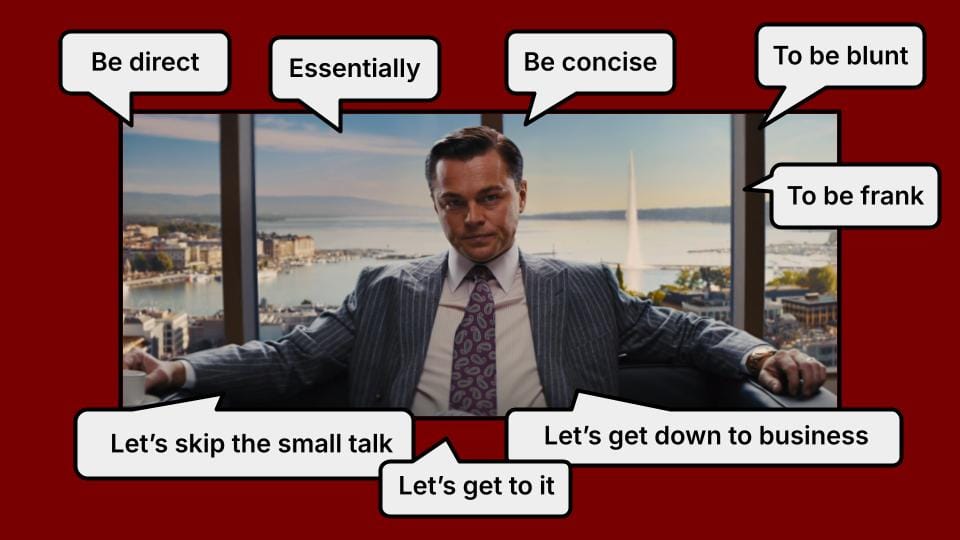

Cutting to the Chase in Communication
The idea for this resource came from a deck of cards, called Storyteller Techniques: 'Ditch dull presentations. Tell great stories'. I think on this occasion, I'll let the card do the talking.
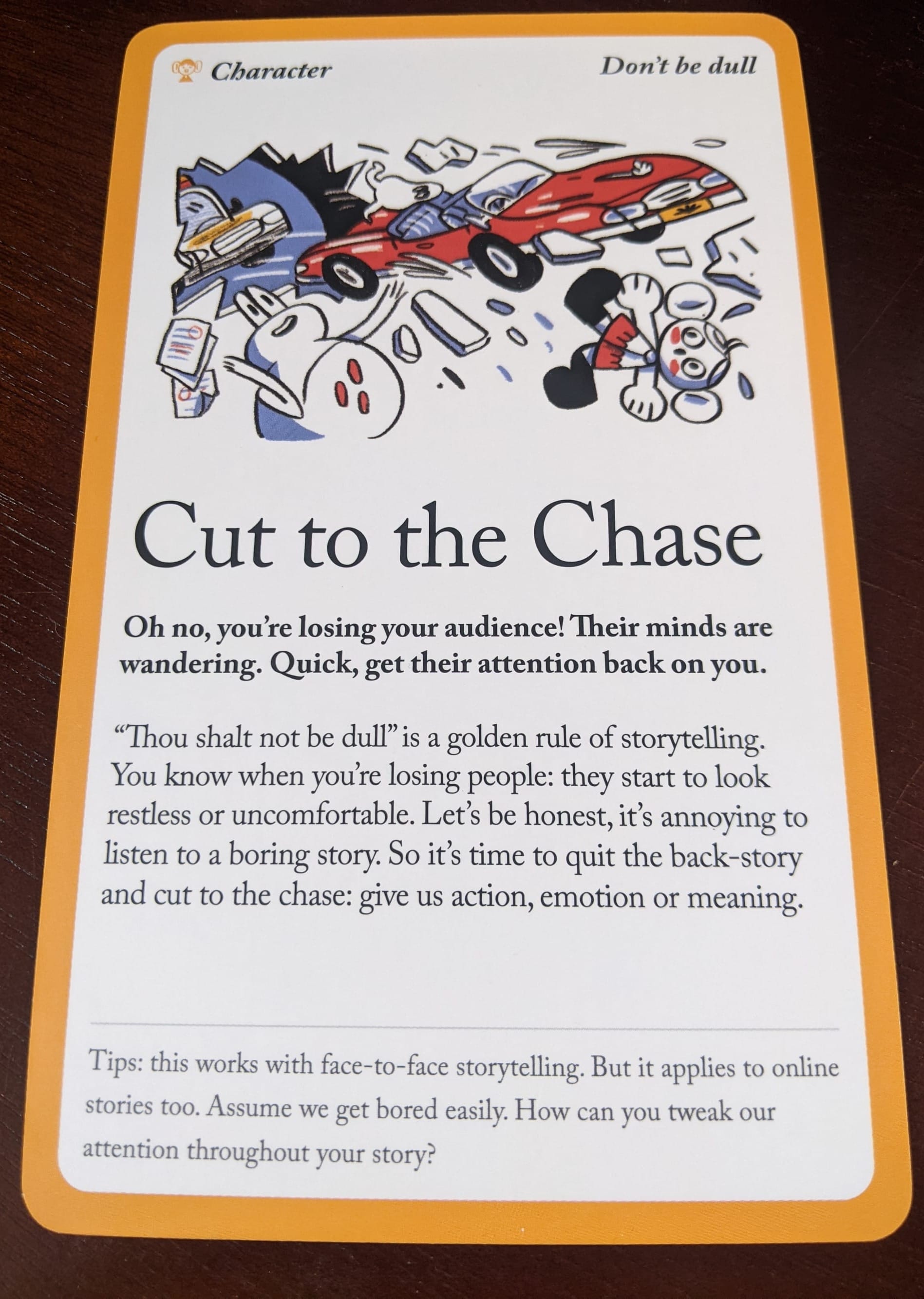
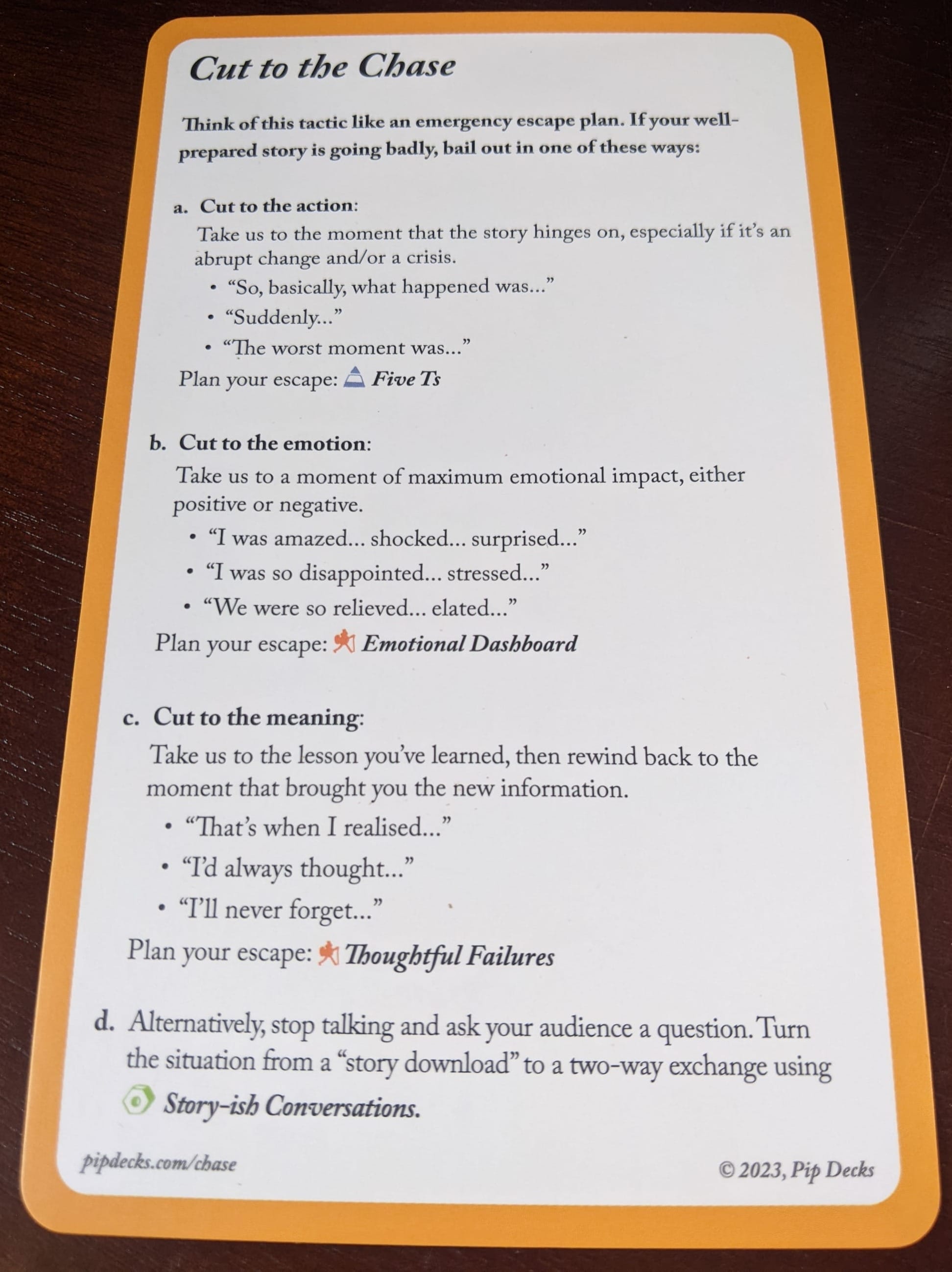
Here is a perfect example of this card in action.
In 'The Wolf of Wall Street', there is a scene where Jordan Belfort is walking through his office, "the bullpen" as it was known, explaining the financial structure of his company.
He was being salesy, persuasive even in his monologue - until he stopped, realised he was overexplaining, boring and using terminology that was likely "going over" his audiences head ("going over one's head" means when something you say is too advanced for the listener to understand and so it "goes straight past them" or "goes in one ear and out the other"). So what did he do? Yes. He cuts to the chase!
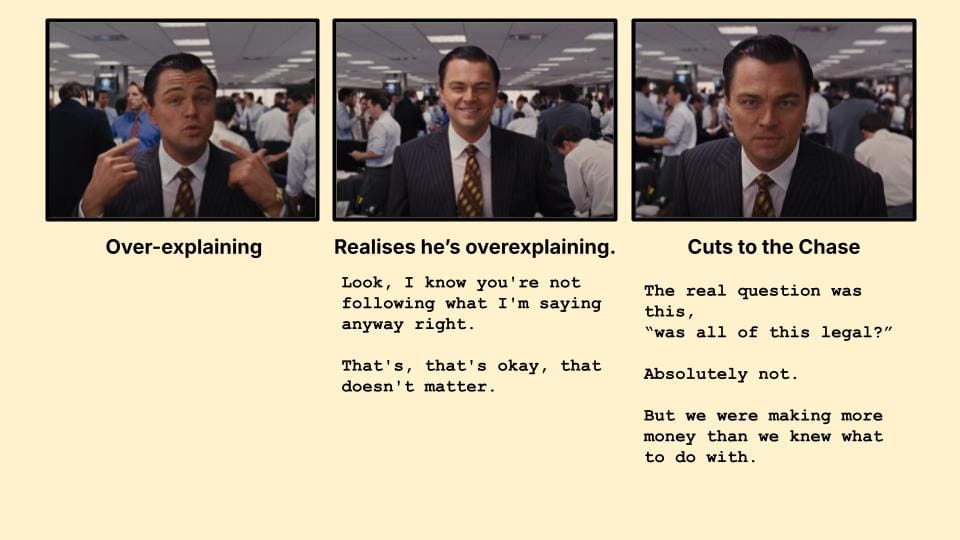
Cutting to the Chase with Grammar
This brings me to the grammar connection, in particular, the elliptical sentence structure. You see the last part of DiCaprio's speech... where he says "Was it legal? Absolutely not". Well, 'Absolutely Not' is an elliptical sentence.
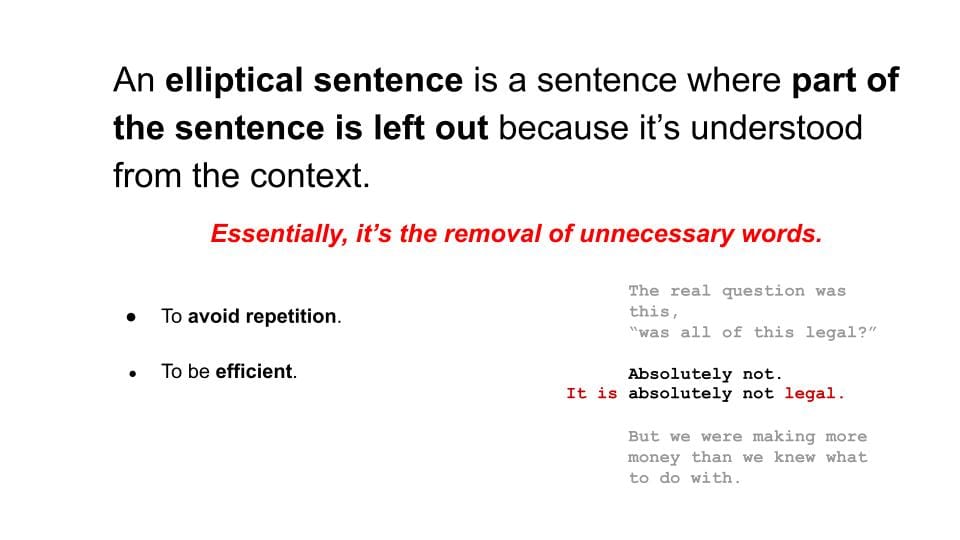
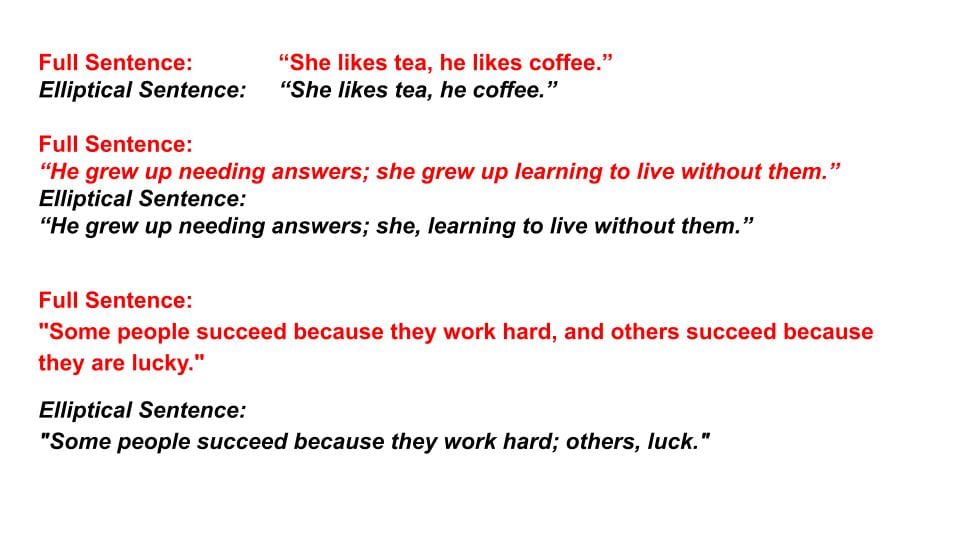
The Opposite of Cutting to the Chase:
To beat around the bush
To ramble on
To give lots and lots of unnecessary details or in the case of Mr Collins in Pride and Prejudice, to give information that might be necessary, but would be best keeping to yourself during a proposal. Cutting to the chase could sometimes take the romance out of a situation, however... here he took the romance out of the situation by doing the complete opposite of cutting to the chase.
